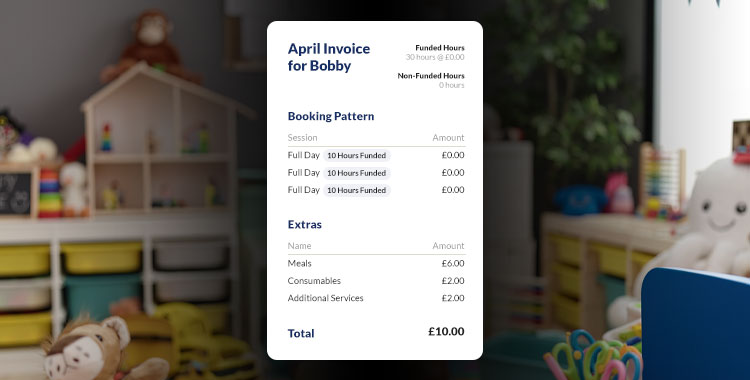Effective staff training and development are crucial for maintaining high standards of care and education in nurseries. Well-trained staff are better equipped to provide quality care, implement best practices in early childhood education, and contribute to a positive, nurturing environment for children. As the childcare sector evolves, so must the approaches to training and development, ensuring that staff are prepared to meet the challenges of their roles. This guide will explore the best practices for staff training and development in nurseries, focusing on creating a culture of continuous learning and professional growth.
The Importance of Staff Training and Development

In nurseries, staff training and development play a pivotal role in ensuring children receive the highest quality of care and education. Trained staff are more confident, capable, and equipped to handle the diverse needs of children in their care. Moreover, continuous professional development (CPD) helps staff stay up-to-date with the latest best practices, regulatory requirements, and innovative teaching methods. This benefits the children and enhances the nursery’s reputation, making it more attractive to parents and potential staff members.
Investing in staff training and development also contributes to employee satisfaction and retention. When staff feel valued and supported in their professional growth, they are more likely to remain committed to the nursery and motivated in their roles. This reduces turnover, which can be costly and disruptive, and helps maintain consistency in the care provided to children.
In addition, training and development programs foster a sense of community and teamwork among staff. When staff members undergo training, they build stronger relationships, share knowledge, and develop a more cohesive approach to care and education. This collaborative environment is essential for creating a positive workplace culture where staff feel connected and supported.
Critical Components of Effective Staff Training and Development

Practical staff training and development programs should be comprehensive, targeted, and ongoing. Below are some of the critical components that should be included:
- Initial Induction Training: Every new staff member should undergo a thorough induction process, introducing them to the nursery’s policies, procedures, and ethos. This training should cover essential topics such as safeguarding, health and safety, and child protection, ensuring all staff understand their responsibilities from day one.
- Ongoing Professional Development: CPD should be a cornerstone of any nursery’s training program. This can include workshops, conferences, and online courses covering various topics, from child development theories to new teaching strategies. Encouraging staff to pursue further qualifications, such as NVQ Level 3 in Childcare, also supports their growth and expertise.
- Specialised Training: Depending on the specific needs of the children in your nursery, specialised training may be necessary. This could include special educational needs (SEN) training, behaviour management, or specific curriculum frameworks such as the Early Years Foundation Stage (EYFS). Specialised training ensures that staff can provide tailored support to children who most need it.
- Mentoring and Peer Support: Pairing less experienced staff with more seasoned colleagues can be an effective way to facilitate learning and development. Mentoring relationships provide new staff with guidance, support, and a model of best practices. Peer support groups can also encourage staff to share ideas, experiences, and strategies.
- Regular Appraisals and Feedback: Regular appraisals are crucial for assessing staff performance, identifying areas for improvement, and setting professional development goals. Constructive feedback should be two-way, allowing staff to discuss their career aspirations and challenges. This dialogue helps create a supportive environment where staff feel valued and motivated to improve.
- Incorporating Reflective Practice: Reflective practice encourages staff to evaluate their work and identify areas for critical improvement. By regularly reflecting on their experiences, staff can develop a deeper understanding of their practice, leading to more thoughtful and practical approaches to teaching and care.
Reflective practice can be integrated into daily routines through journals, group discussions, or regular meetings where staff share their reflections. This practice improves individual performance and contributes to the nursery’s overall growth and improvement.
Best Practices for Implementing Staff Training and Development

Implementing a practical staff training and development program requires careful planning, ongoing support, and a commitment to fostering a culture of continuous learning. Here are some best practices to consider:
- Create a Training Plan: Develop a comprehensive training plan that outlines the training types, the schedule for training sessions, and the goals you hope to achieve. The plan should be flexible enough to accommodate your staff’s varying needs while meeting all mandatory training requirements.
- Tailor Training to Individual Needs: Recognize that each staff member has unique strengths, weaknesses, and career goals. Tailoring training to individual needs makes the training more relevant and shows staff that their personal development is valued. This might involve offering different levels of training or providing one-on-one coaching for specific skills.
- Utilise a Variety of Training Methods: People learn differently, so it’s essential to use various training methods to accommodate different learning styles. This could include in-person workshops, online courses, hands-on training, and group discussions. Blending these methods can make the training more engaging and effective.
- Encourage a Learning Culture: Foster a culture where learning is valued and encouraged. This can be achieved by promoting open discussions about best practices, celebrating staff achievements in training, and providing opportunities to share what they’ve learned with their colleagues. A positive learning culture motivates staff to seek new knowledge and skills continuously.
- Provide Access to Resources: Ensure staff access to the resources they need for professional development. This could include access to a library of books and journals on early childhood education, subscriptions to online training platforms, or funding for external courses and conferences.
- Measure the Impact of Training: Regularly evaluate the effectiveness of your training and development program by measuring its impact on staff performance and child outcomes. This could involve collecting feedback from staff, observing changes in practice, and analysing metrics such as child progress and staff retention rates. Use this data to make informed decisions about future training initiatives.
- Stay Up-to-Date with Industry Standards: The field of early childhood education is constantly evolving, with new research, regulations, and best practices emerging regularly. Stay informed about industry developments by subscribing to relevant publications, attending conferences, and participating in professional networks. This will help ensure your training program remains current and aligned with the latest standards.
Additionally, consider joining professional organisations such as the National Day Nurseries Association (NDNA) or the Early Years Alliance, which offer resources, training opportunities, and support for nursery staff. These organisations can provide valuable insights and help you stay connected with the broader early years community.
Overcoming Challenges in Staff Training and Development

While staff training and development benefits are clear, nurseries may need help implementing effective programs. Here are some common challenges and strategies for overcoming them:
- Limited Time and Resources: Nurseries often operate with tight budgets and busy schedules, making it challenging to allocate time and resources for training. To address this, consider integrating training into regular staff meetings or online courses that staff can complete at their own pace. Additionally, seek free or low-cost training opportunities, such as webinars or local workshops.
- Resistance to Training: Some staff may resist training, especially if they feel it’s unnecessary or irrelevant to their role. Overcome this by clearly communicating the benefits of exercise, involving staff in the planning process, and tailoring training to their interests and needs. Highlight how training can help them achieve their personal and professional goals.
- Ensuring Consistency Across the Team: With staff at different levels of experience and expertise, ensuring consistency in training can be challenging. Develop a core training program that all staff must complete, supplemented by additional training tailored to individual needs. This ensures that everyone has a solid foundation while allowing personalised development.
- Keeping Training Relevant: Training programs can quickly become outdated if they don’t keep pace with changes in the field. Regularly review and update your training content to reflect the latest research, best practices, and regulatory requirements. Engage with external trainers or consultants to bring fresh perspectives and knowledge to your team.
- Balancing Workload and Training: Managing a nursery’s day-to-day operations can be challenging while ensuring staff have time for training. Consider implementing a rotational system where staff members take turns attending training sessions while others cover their responsibilities. This ensures the nursery continues operating smoothly while staff receive the necessary training.
Conclusion
Investing in staff training and development is essential for maintaining high standards of care and education in nurseries. By implementing best practices such as personalised training plans, ongoing professional development, and fostering a culture of continuous learning, nurseries can ensure their staff are well-equipped to provide children with the best care and education. Overcoming challenges such as limited resources and staff resistance requires creativity and commitment, but the benefits of a well-trained, motivated, and satisfied team are well worth the effort.
Contact us today for more information on how Nursery in a Box can support your nursery’s training and development initiatives or to explore our range of digital tools designed to enhance staff learning and professional growth. Let’s work together to create an environment where children and staff can thrive.
External Resources:
• Continuous Professional Development in Early Years
• Training and Development for Early Childhood Educators
• Best Practices for Staff Training in Childcare

Hannah
Marketing Manager




